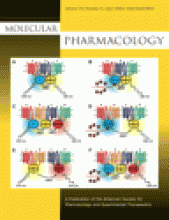Abstract
Capacitative Ca2+ entry (CCE), which occurs through the plasma membrane as a result of Ca2+ store depletion, is mediated by stromal interacting molecule 1 (STIM1), a sensor of intracellular Ca2+ store content, and the pore-forming component Orai1. However, additional factors, such as C-type transient receptor potential (TRPC) channels, may also participate in the CCE apparatus. To explore whether the store-dependent Ca2+ entry reconstituted by coexpression of Orai1 and STIM1 has the functional properties of CCE, we used the Ca2+-calmodulin stimulated adenylyl cyclase type 8 (AC8), which responds selectively to CCE, whereas other modes of Ca2+ entry, including those activated by arachidonate and the ionophore ionomycin, are ineffective. In addition, the Ca2+ entry mediated by previous CCE candidates, diacylglycerol-activated TRPC channels, does not activate AC8. Here, we expressed Orai1 and STIM1 in HEK293 cells and saw a robust increment in CCE, and a proportional increase in CCE-stimulated AC8 activity. Inhibitors of the CCE assembly process ablated the effects on cyclase activity in both AC8-overexpressing HEK293 cells and insulin-secreting MIN6 cells endogenously expressing Ca2+-sensitive AC isoforms. AC8 is believed to be closely associated with the source of CCE; indeed, not only were AC8, Orai1, and STIM1 colocalized at the plasma membrane but also all three proteins occurred in lipid rafts. Together, our data indicate that Orai1 and STIM1 can be integral components of the cAMP and CCE microdomain associated with adenylyl cyclase type 8.
Footnotes
-
This work was supported by the National Institutes of Health National Institute of Neurological Disorders and Stroke [Grant NS28389]; The Wellcome Trust [Grant RG31760]; the European Union [Grant QLK3-CT-2002-02149]; European Foundation for the Study of Diabetes/MSD; the Swedish Research Council; the Swedish Diabetes Association; the Novo Nordisk Foundation; and the Family Ernfors Foundation.
-
ABBREVIATIONS: AC, adenylyl cyclase; OAG, 1-oleyl-2-acetyl-sn-glycerol; CCE, capacitative Ca2+ entry; STIM1, stromal interacting molecule 1; HEK, human embryonic kidney; ER, endoplasmic reticulum; 2-APB, 2-aminoethoxydiphenyl borate; YFP, yellow fluorescent protein; HA, hemagglutinin; PCR, polymerase chain reaction; CRAC, Ca2+ release-activated Ca2+; AEBSF, 4-(2-aminoethyl)benzenesulfonyl fluoride; SES, standard external solution; RT, room temperature; TG, thapsigargin; TBS, Tris-buffered saline; TTBS, Tris-buffered saline/Tween 20; MES, 2-(N-morpholino)ethanesulfonic acid; PBS, phosphate-buffered saline; FRET, fluorescence resonance energy transfer; CFP, cyan fluorescent protein; bp, base pair(s); ANOVA, analysis of variance; Epac1-camps, Epac1-based fluorescent cAMP sensor; TRPC, C-type transient receptor potential.
- Received September 3, 2008.
- Accepted January 22, 2009.
- The American Society for Pharmacology and Experimental Therapeutics
MolPharm articles become freely available 12 months after publication, and remain freely available for 5 years.Non-open access articles that fall outside this five year window are available only to institutional subscribers and current ASPET members, or through the article purchase feature at the bottom of the page.
|






